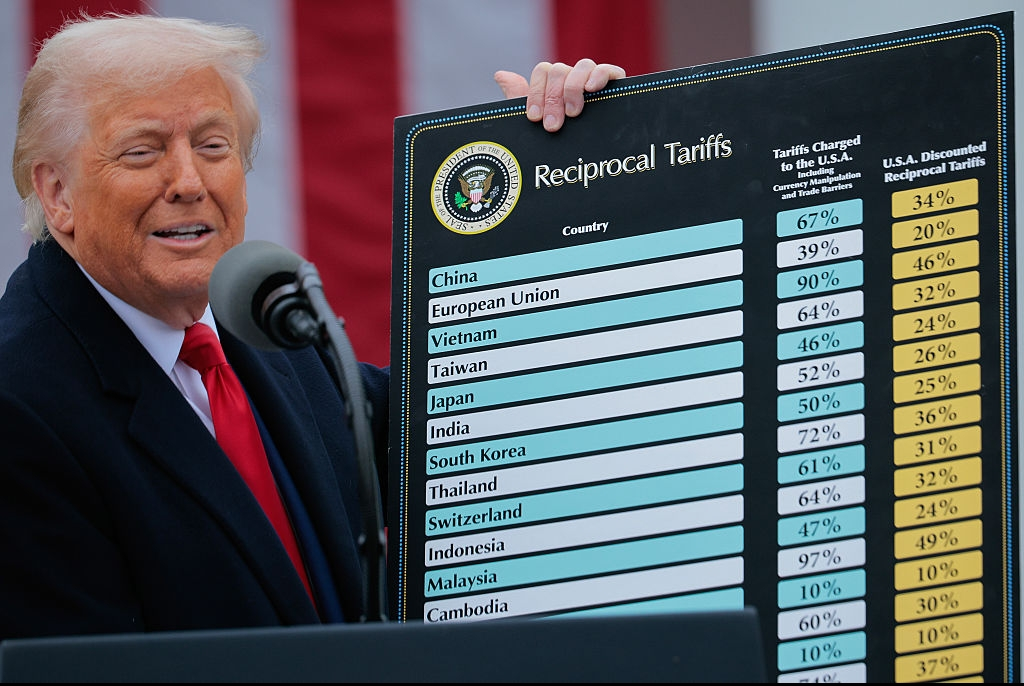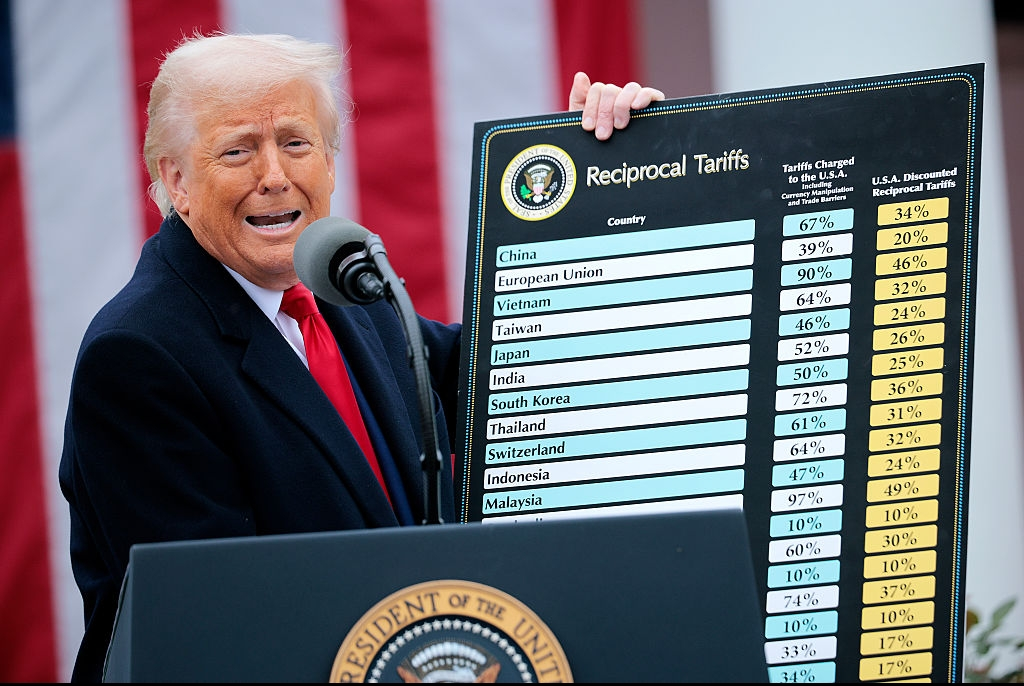In a move that has sparked debates and raised eyebrows, former President Donald Trump recently announced a sweeping new tariff policy targeting almost every country around the globe. Standing confidently in the White House Rose Garden, Trump declared that it was time to “Make America Wealthy Again” by imposing hefty tariffs on imports.
However, while the bold rhetoric might sound promising to some, the reality is that everyday Americans could end up paying the price. From groceries to clothing, cars to alcohol, these tariffs are set to increase the cost of a wide range of products. Let’s break down what this means for your wallet.

What Are These Global Tariffs All About?
Trump’s new tariff policy is unprecedented in its scope. Almost every country that imports goods to the United States will face a minimum tariff of 10%, with some rates going as high as 50%. However, three notable countries are missing from this updated list: Canada, Mexico, and China.
These three nations are not exempt because of any special favor but because they have already been hit with tariffs under existing trade agreements. This strategic move leaves nearly the entire globe facing increased import costs, and as a result, consumers in the U.S. are likely to see prices soar.

The Impact on Your Daily Essentials
It’s not just luxury items or specialized goods that are affected. Everyday essentials are also on the list, and the price hikes will be hard to ignore. Let’s take a closer look at some of the most impacted items.
1. Alcohol: Say Goodbye to Affordable Wine and Beer
If you’re a fan of Spanish wine, French champagne, or German beer, brace yourself for sticker shock. Trump has proposed a 200% tariff on alcohol from the EU, which means your favorite imported drinks could become a luxury rather than a staple.
Imagine hosting a dinner party without that beloved bottle of bubbly or saying goodbye to affordable German lagers. The sharp rise in alcohol prices will certainly hit social gatherings and personal indulgences alike.
2. Coffee Lovers Beware: Your Morning Fix Could Get Pricey
Americans consume vast amounts of coffee daily, with Brazil and Colombia leading as the primary suppliers. Both countries are now facing a 10% tariff, and you can bet that coffee companies won’t absorb that cost. Instead, they’ll pass it on to you, the consumer.
Next time you grab your favorite brew at the local café, don’t be surprised if your morning cup of joe costs a bit more. Even grocery store coffee brands are expected to see a bump in prices.
Video: Trump unveils sweeping global tariffs in watershed moment for world trade | BBC News
3. Clothing and Footwear: Get Ready for Higher Prices
America relies heavily on imported clothing and footwear from China, Bangladesh, and Vietnam. The new tariffs include a hefty 46% increase on goods from Vietnam, scheduled to kick in soon.
From sneakers to school uniforms, the cost of dressing yourself and your family is about to climb. Retailers who source products from these countries are already bracing for the impact, and shoppers should be prepared for fewer sales and higher price tags.
4. Automotive Costs: Foreign Cars and Parts to Spike
Cars aren’t exempt from these global tariffs either. All imported cars and car parts now face a 25% tariff. This doesn’t just mean that buying a foreign car will cost more — it also means that many U.S.-made vehicles, which use imported parts, will also see price increases.
Experts from the Anderson Economic Group estimate that vehicle prices could rise anywhere from $2,500 to $20,000. For anyone planning to purchase a car in the near future, this is a major consideration.

Even Your Maple Syrup Isn’t Safe
Yes, even your Canadian maple syrup could become a casualty of the new tariffs. Canada, known for supplying 90% of the world’s maple syrup, is already subject to existing tariffs under the Canada-US-Mexico Agreement (CUSMA). Now, with additional duties on non-compliant goods and certain energy products, the cost of that sweet pancake topper might just climb.
Thomas Sampson from the London School of Economics warns that not only will pure Canadian syrup cost more, but even domestically produced syrup that relies on Canadian ingredients will also see price hikes.
Why Are Some Countries Not Affected?
It might seem strange that Canada, Mexico, and China are not on the new tariff list. The reason? These countries are already subject to separate trade restrictions and tariffs. For instance:
- Canada: Subject to a 25% car tariff and previous levies on steel and aluminum.
- Mexico: Included in the CUSMA deal, which already enforces specific tariffs.
- China: Continues to face 34% tariffs, with potential increases to 54% due to other existing trade agreements.
In addition, countries like Russia and Belarus remain unaffected because they are already under heavy economic sanctions.
Video: Watch Donald Trump’s Tariff Chart: China Slapped With 34%, THIS Country Tops The List
Why These Tariffs Matter to You
The main goal behind these tariffs, as stated by Trump, is to boost domestic production and reduce reliance on foreign imports. However, in practice, the burden often falls on consumers who end up paying higher prices for basic goods.
Economists warn that while the idea is to strengthen U.S. industries, it could backfire by inflating costs on everyday items. This, in turn, might reduce consumer spending and strain household budgets.
A Tough Road Ahead for Consumers
In the end, these tariffs could lead to more than just higher prices. They might affect jobs, small businesses, and even the broader economy. Many industries that depend on imported goods, like automotive manufacturing and retail, may face difficult choices: pass costs onto customers or cut back on staff to stay afloat.
While some may appreciate the intent of protecting American industries, the reality of these sweeping tariffs could mean that Americans end up paying the price, quite literally.
Conclusion: A Complex Economic Gamble
Trump’s ambitious tariff plan is a bold economic move aimed at reasserting U.S. trade dominance. Yet, as the dust settles, it’s becoming clear that everyday Americans could face the financial consequences. From your morning coffee to your next car purchase, the impact of these global tariffs will undoubtedly be felt in daily life.
Navigating the new economic landscape won’t be easy. As prices rise, consumers may need to rethink their spending habits and find creative ways to stretch their budgets. Whether the long-term benefits will outweigh the immediate costs remains to be seen, but one thing is certain — the next time you shop, be prepared to pay a little more.